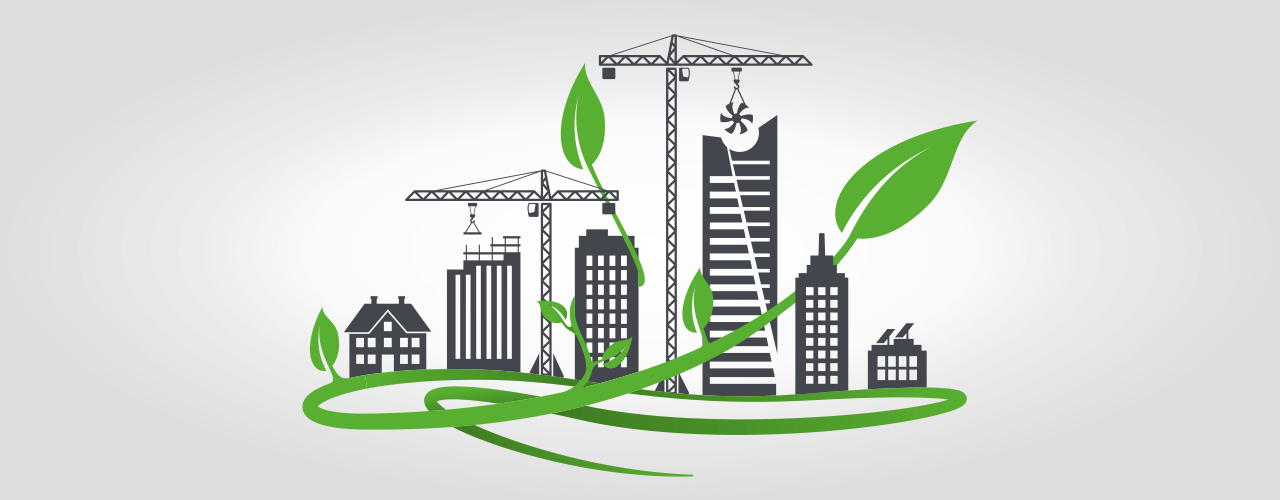The U.S. Green Building Council recently released its annual list of top 10 States for LEED Green Building in 2018. The top picks for LEED (Leadership in Energy and Environmental Design) – are home to about 128 million Americans and include over 468 million gross square feet of LEED-certified space.
LEED is the most widely used green building rating system in the world. According to Mahesh Ramanujam, president and CEO of the U.S. Green Building Council (USGBC):
These top 10 states are examples of how we can create lasting, measurable change and improve the quality of life for everyone in our communities. A better future requires a universal living standard that leaves no one behind – and that future would simply not be possible without the extraordinary work being done in these states.
2018 Top 10 States for LEED
The top 10 states for LEED-certification in 2018 were compiled using the most recent U.S. Census data and include commercial and institutional green building projects certified throughout 2018. The USGBC calculates the list using per capita figures to allow for a fair comparison of green building projects among states with different population and building levels.
Here are the top-10 state rankings when measured on a gross square foot (GSF) per capita basis of LEED-certified space:
- Illinois: 68,133,942 certified GSF, 172 certified projects, 5.31 GSF per capita
- Massachusetts: 34,718,212 certified GSF, 122 certified projects, 5.30 GSF per capita
- Washington: 28,555,753 certified GSF, 137 certified projects, 4.25 GSF per capita
- New York: 72,881,287 certified GSF, 214 certified projects, 3.76 GSF per capita
- Texas: 88,404,993 certified GSF, 277 certified projects, 3.52 GSF per capita
- Colorado: 17,042,295 certified GSF, 114 certified projects, 3.39 GSF per capita
- Hawaii: 4,504,287 certified GSF, 20 certified projects, 3.31 GSF per capita
- Virginia: 25,348,631 certified GSF, 136 certified projects, 3.17 GSF per capita
- California: 112,388,968 certified GSF, 521 certified projects, 3.02 GSF per capita
- Maryland: 16,869,680 certified GSF, 113 certified projects, 2.92 GSF per capita
Washington D.C.
Washington D.C. doesn’t appear on the Top 10 list because it is a federal district and not a state. However, the District of Columbia has consistently led the pack for LEED-certified buildings.
With 37,147,538 certified gross square feet in 145 certified projects, D.C. boasts an astounding 61.74 GSF per capital. But that’s not the only record that the District holds. In 2017 Washington D.C. was the first city in the world to be LEED-certified. The nation’s capital also ranked among the top 10 out of the 40 most sustainably powered cities in the U.S. and boasts the largest share of green commercial real estate property out of the cities researched by the study.
LEED-certified Cities and Communities
Nine of the top 10 states in the 2018 list are also home to LEED-certified cities and communities, including Chicago, Seattle, Austin, and San Diego County.
LEED-certified communities are where smart cities meet sustainability. The certification is changing the way cities plan, develop, and operate. LEED for Cities projects measure and manage a city’s water consumption, energy use, waste, transportation, and overall human experience.
Greg Stanton, Mayor of Phoenix, has this to say about the green building and smart city initiatives of this metropolitan area located in the vast southwestern deserts of the U.S.:
Phoenix has earned a national reputation for its leadership on sustainability, and this prominent certification validates our incredible progress. We’ve set ambitious goals, and Phoenix will continue to take more steps to divert waste, increase water efficiency, and reduce carbon emissions, which benefits us, our environment and our economy.
Green Building Continues to Thrive
According to the USGBC client demand for green buildings will continue to grow for the next several years as property technologies improve and occupant health and well-being emerge as top factors of social and corporate responsibility.
Through LEED, the U.S. Green Building Council is pushing the commercial real estate market toward better-performing buildings that improve quality of life for residents and the community at large. The USGBC recently introduced LEED v4.1 – the latest update to the LEED rating system – and opened registration for buildings in the following three categories:
- LEED v4.1 O+M for existing buildings
- LEED v4.1 BD+C for new construction
- LEED v4.1 ID+C for interiors
USGBC also launched the Living Standard campaign at 2018’s Greenbuild in Chicago. The campaign expands the Council’s global green building efforts and ensures that LEED remains both the industry leadership standard and the pre-eminent living standard. The Living Standard campaign uses storytelling to illustrate how USGBC, LEED, ENERGY STAR and other green building and sustainability programs are improving the quality of life for people around the globe.









